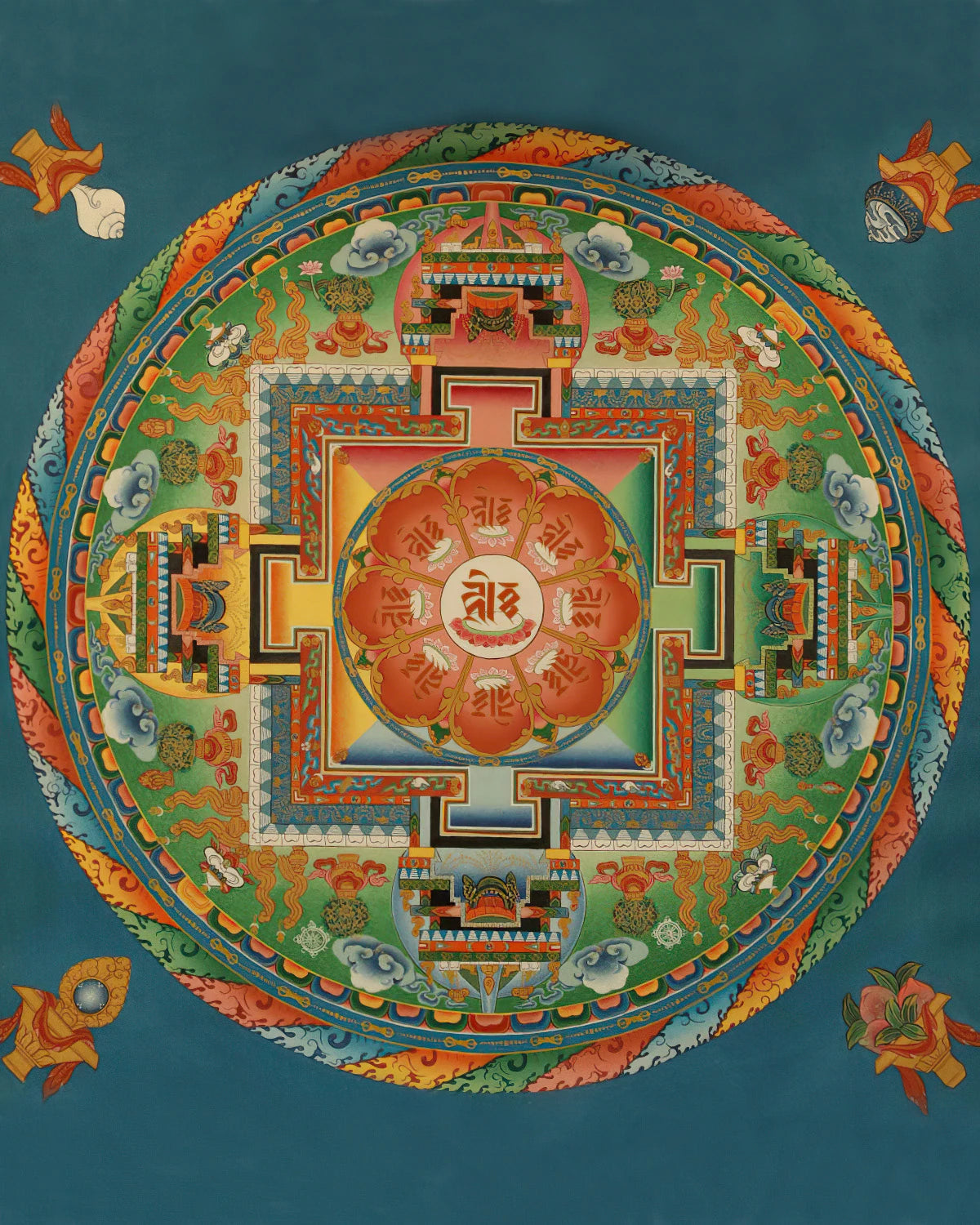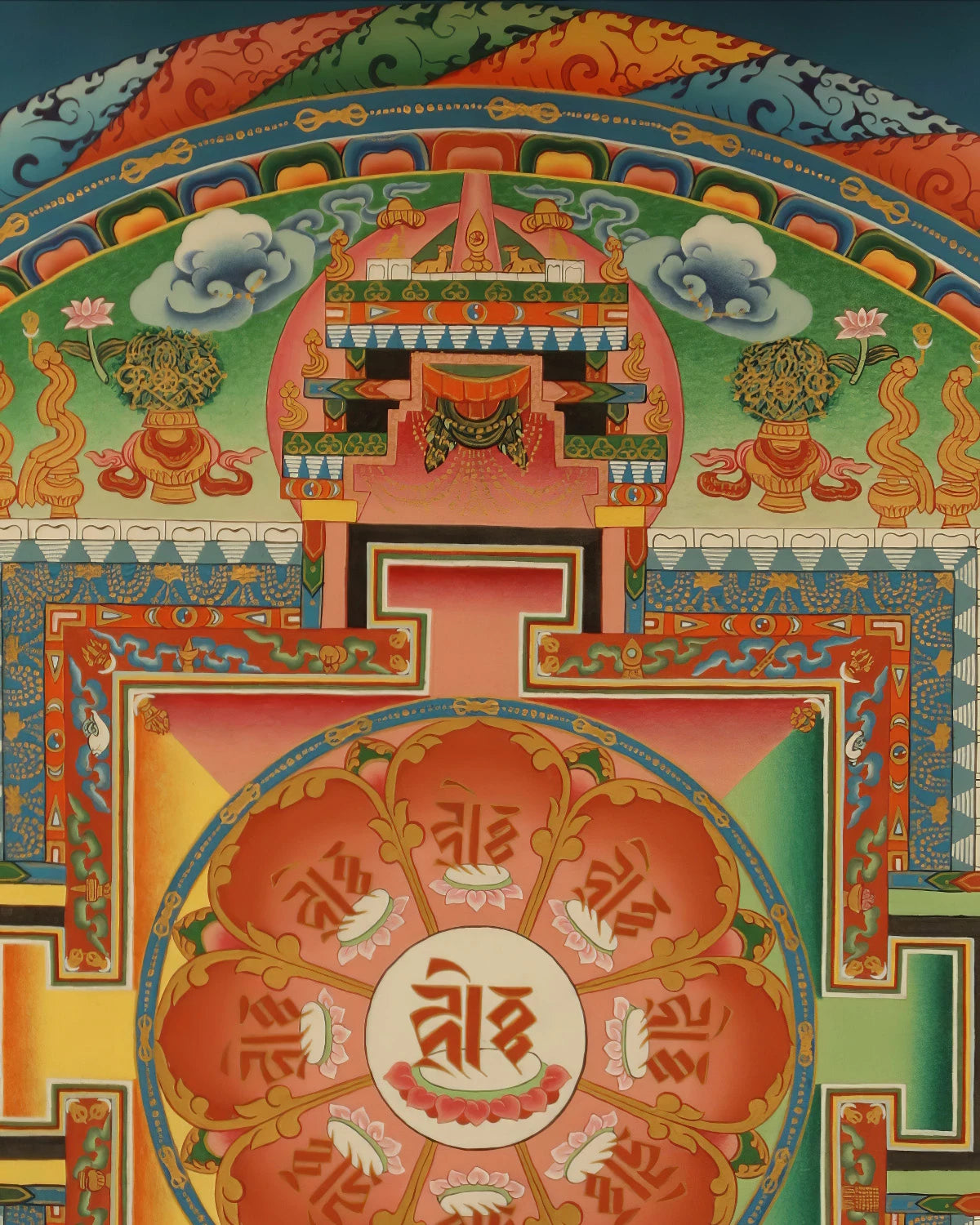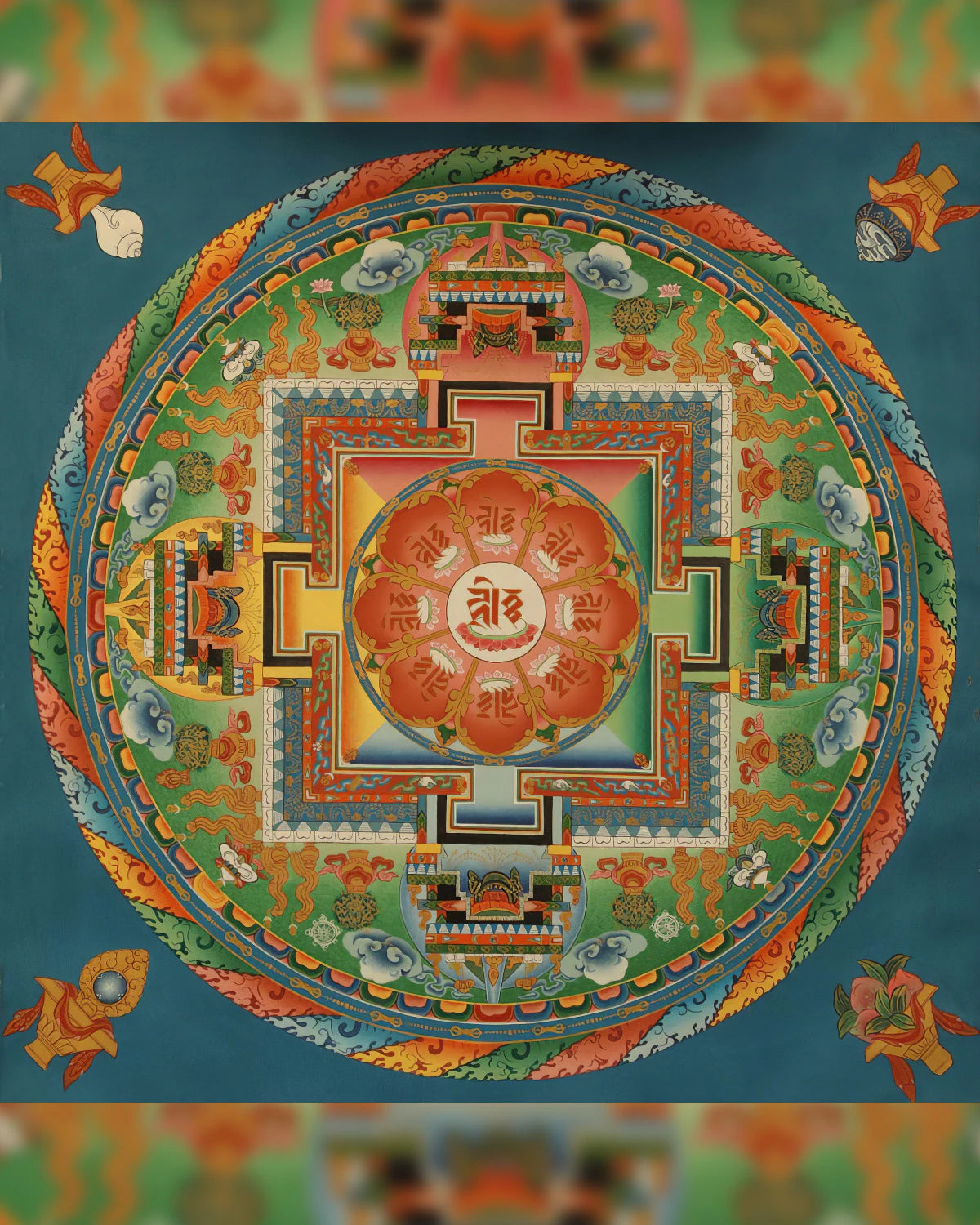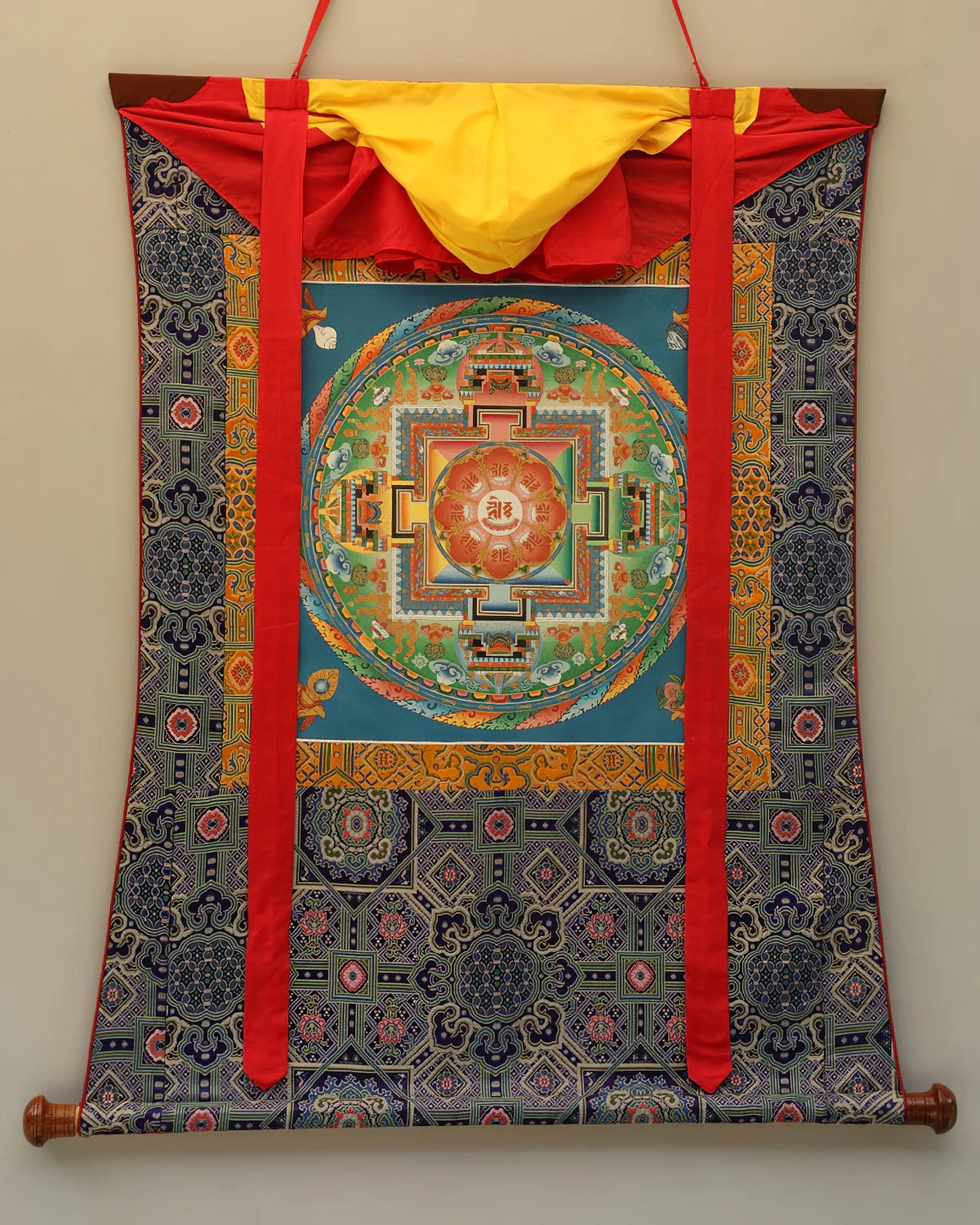



Amitayus Mandala
A Mandala is a visual representation of the abode of a deity or god. However, the appearance of the abode of a deity is said to depend on the mind of the one who is viewing it, so this depiction is merely how it would appear to human beings. With the aid of initiation from a lineage holder and correct practice, it is possible to actually enter into the mandala and it becomes a vehicle of enlightenment.
The Mandala of Amitayus as depicted here is a two-dimensional rendering of an actual structure that is shaped like a pyramid. Each aspect of the mandala represents a physical feature of the abode, as well as an aspect of the enlightened mind. Of these, the first floor and the outermost square represent the qualities of a Buddha’s bodily activities. The second floor is that of his speech, the floor above that of his mind, while the last floor – depicted as the smallest innermost square – represents the fully enlightened intelligence. At the pyramid’s pinnacle is Amitayus’s mantra written in Lenza script, a form of Tibetan writing often used to transcribe Sanskrit.
According to tradition, the Buddha first revealed the Amitayus Mandala to a group of celestial disciples as a magical apparition. Later it began appearing in drawings and etchings as Mahayana Buddhism began spreading in India in the first century AD.
There are, however, numerous versions of the Mandala, each one stemming from the visions received by individual enlightened adepts.
The thangka comes framed in a traditional silk brocade border.
Craftsmanship
Choose options





